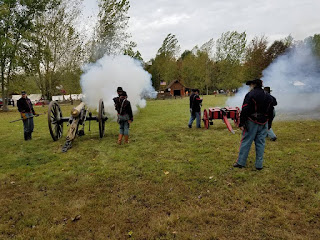Reenacting as a couple
As some of our readers may know, Jade and I are reenacting as a dating couple. This leads to several benefits.
One of the biggest benefits we have is teamwork. All artillery crews work as a team it is true, but when we are on the same crew we click and the process works smoother. Example being the recent reenactment at Mooresville. While working with the senior corporal in the battery, we were able to fire a breech loading cannon faster than infantry load their muskets.
It is another benefit that we can work together in camp. Something needs to be done, we can often work together as a team to do what needs to be done.
The greatest benefit in my opinion is simply doing the hobby that I love the most with the woman I love the most.
I will say this. Biggest drawback is a very basic one. We like to hold hands. Automatic reflex. Looks quite strange when we are both soldiers.
Corporal.


























